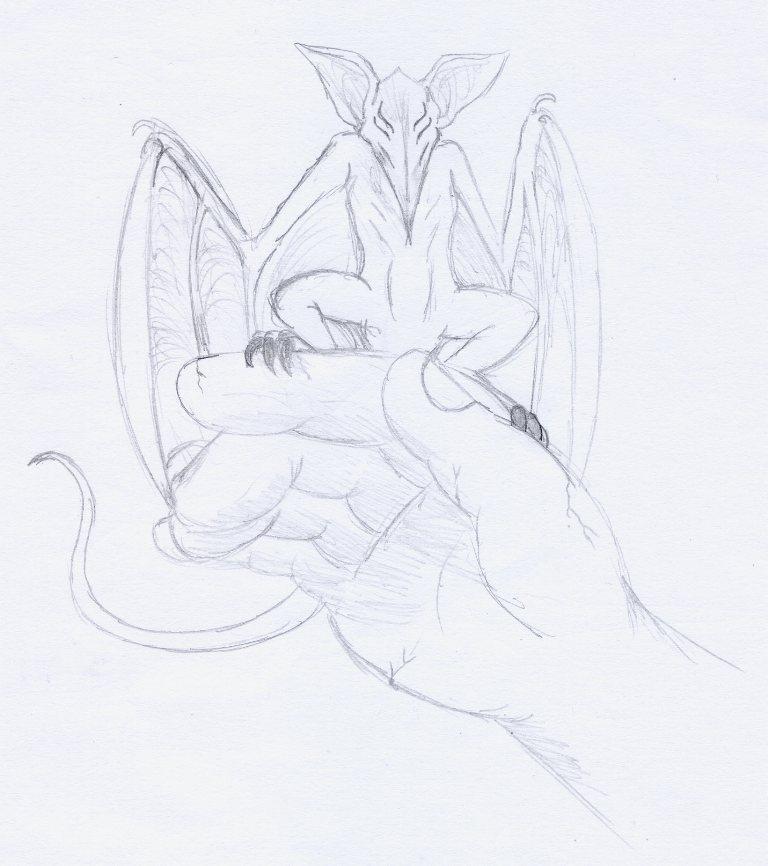 Gharlakan (Basilisk Wren)
Gharlakan (Basilisk Wren)| AC | 6 | Dexterity | 14 |
| HD | 2 | Move | 40 |
| Attacks | 1 swipe 1 peck | Alignment | Evil |
| Damage | 1d6+1 Special | Treasure | 9 |
These subterranean abominations infest the cavernous realms below, calling tunnel and cave alike home. Roughly the size of a man's fist, the Gharlakan are the bane of dwarf and delver alike.
Lairing in crevasses scratched into stone, Gharlaken nests can be identified by a blue-white phosphorescence, an artifact of the glowing moss which grows on the Gharlakan's leathery hides. When disturbed, 1d10 Gharlakan swarm forth, attacking with the spined ends of their whip-like tails and a more insidious venom.
This venom, delivered by the nib-like beak, hardens flesh, leaving it a strong, dead stone. When pecked, the victim must save vs paralysis or suffer a point of damage to their dexterity as skin hardens and loses its pliability. If dexterity is reduced to zero, the victim is transformed wholly, leaving behind a statue locked in a rictus of pain and fear. It is these statues that give the Gharlakan its common name.
1D6 rumors
- Among certain dwarven cultures, the Gharlakan's venom is part of holy rite, ritual scarification in which intricate patterns of stone are worked onto the dwarf's body. The artful application and minute quantities used inflict a no penalty if performed properly.
- Gharlakan are an experiment in eradicating Stirges. It didn't work
- The statues are not truly dead, and the victims remain aware of what is going on around them.
- Gharlakan tastes like chicken
- The court of the Crimson Emperor employs a nest of Gharlakan as part of its torture.
- There are rumors of rare albino Gharlakan that transform flesh to gems or precious metals. These are surely myths, but then, the dwarven princess does sport a rather fetching silver tattoo.
No comments:
Post a Comment